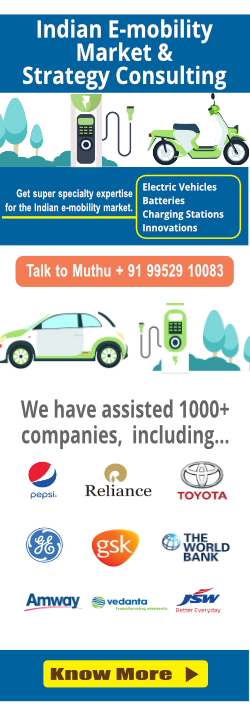===========================================
Are you looking to get energy security for your company through reduction in the use of diesel, furnace oil, LPG and costly grid power?
EAI can do a feasibility study for the use of solar PV & thermal, biomass for heat and power, waste heat recovery and energy efficiency to dramatically cut down fossil fuel use and reduce your energy bills. See EAI’s SURE-FIRE offering for more.
===========================================
Everyone today knows the story of LEDs – those amazing light emitting devices that can provide a similar illumination as that of the incandescent lamp at about 15-20% of the wattage. Here’s a nice chart for those of you who would like to get a low down of comparative statistics for LED vs CFLs vs incandescent lights.
The devil that has been however preventing LEDs from achieving scale and ubiquity is its high upfront cost – an LED could cost upwards of 30 times that of an incandescent lamp ( Two years back, I decided to try out an LED in my office – and blew Rs 3000 for a LED d0tted lamp that replace a Rs 100 tube light)! While you would have surely seen the math by which LED is clearly the winner if considered the entire lifetime of the product, high upfront costs are party-poopers – sadly, few people think so long term.
But things are changing. With higher costs for electricity being implemented across the country, the attractiveness of LEDs is increasing all the time. And government mandates help too.
LEDs are becoming especially interesting for the industrial sector. And here’s why.
Let’s consider a building with about 100 tubelights, wattage 60 W each. Each costs Rs 100 and has a lifetime of about 1500 hours. Each of these tubelights can be replaced by a 10 W LED, each costing about Rs 1500 ad having a lifetime of 50,000 hours.
Over the lifetime of the LED (50,000 hours) you would have bought about 35 tubelights (50,000/1500), this alone costing about Rs 3500. For 50,000 hours, each LED would have consumed 500 kWh/units (50000*10 W/1000), while the tubelight would have consumed 3000 units (50000*60/1000). If each unit costs Rs 5 on average, the total power expense using LED would be Rs 2500 while that using the tubelight would be Rs 15,000.
The final math, thus is as follows for a like-to-like comparison for LED vs tubelight for the entire LED lifetime:
Total fixed costs
Tubelight – Rs 3500
LED – Rs 2000
Total power costs
Tubelight – Rs 15000
LED – Rs 2500
Total costs (fixed + power)
Tubelight – Rs 18500
LED – Rs 4500
Thus, over the lifetime, an LED saves almost 80% over the tubelight, with an absolute saving of Rs 14000. For a factory that operates with 100 lights, this saving would be Rs 14 lakhs, and for a larger factory with 1000 lights, the saving works out to a phenomenal Rs 1.4 crores
This is the reason Indian companies should be going for LEDs. However, while the numbers are pretty much in favour of LEDs, there is no big rush to replace incadescents or tube lights with LEDs. This is because as things stand, LEDs cannot READILY substitute tubelights and incandescent lamps in every situation. But with the LED technology and products fast evolving, it should not be long before LEDs are everywhere,
Some trends in the context of LED are worth noting.
In February 2012, India became the first country in the world to comprehensively regulate light-emitting diodes (LEDs), a super-efficient lighting technology, when the Bureau of Energy Efficiency (BEE) and the Bureau of India Standards (BIS) published ten comprehensive performance, safety, and quality standards for LEDs. With technical assistance from CLASP, BEE developed the LED standards and guided them through the BIS approval process, expediting the final publishing of the regulations. (source)
EAI’s Consulting Division provides special assistance for entrepreneurs/businesses interested in exploring opportunities in the green buildings domain.See here for more.
Large Indian corporate entities like Infosys, IT special economic zones and projects such as Mahindra City in Chennai have all taken to LED lighting. Philips India has a market share of over 30 per cent in a lighting market of Rs 7,600-7,800 crore (as of 2010). The LED lighting market, estimated to be $100 million (about Rs 500 crore), is heading to be a half a billion dollar market by 2015 ($480-500 million), Mr Nirupam Sahay, President, Lighting India for Philips Electronics India (source)
Some of the applications in industrial environments where LEDs can be used right away are:
- Street lighting and outdoor lighting
- Lighting for Signs & Displays
- Flood Lights
- Specialized Lighting
- Lighting in Specific Areas such as Warehouses
- Footpath & Conveyor Lighting
- Security Lighting
For those wanting to know more about the latest innovations in LED, the following links could be of help:
Seven Weird & Wonderful Uses for LED Lighting Technology
Philips highlights LED innovations at Light + Building 2012
Light Up Your Imagination: Samsung’s LED Innovations at Light + Building Fair 2012
See also: an interesting emerging cleantech segment – Building Energy Analytics . Also, some useful links on energy efficiency in hotels, warehouses, airports, sports stadiums, hospitals and even prisons.








